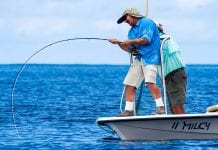Angling for surface feeding carp is arguably one of the most exciting and rewarding aspects of specimen fishing and there are a huge array of methods and tricks that can be adopted to fool these wary fish.
Successful surface fishing is about adapting your approach to suit the conditions, venue and angling situation. The huge range of tackle, baits, methods and tactics available to the angler makes it a real mine field for the novice; due to this Tackle Fanatics have compiled a guide to help you put more fish on the bank.
Hardwear
The correct rod for surface fishing is essential; a long soft rod is best suited due to its ability to quickly pick up line off the surface, whilst being soft enough to avoid hook pulls and breakages. There are dedicated surface fishing rods on the market but the novice surface angler can easily just use an Avon, barbel or light carp rod, which can be just as effective and normally much cheaper.
These rods will provide the angler with loads of fun due to their soft action and light test curves. As you find your way into surface fishing and start to target fish on the surface more seriously you can buy yourself a dedicated floater rod. These rods are specifically designed to cater for the demands of the specialist surface angler and will help you angle more effectively.
The requirements for floater fishing reels aren’t as specific as the rod and anything can be used providing its lightweight, has a precise clutch and a decent line capacity. Your reel must be loaded with strong, low diameter mono or quality floating braid. Mono breaking strains from 6-12lb are most common, and with braid you are best using 15-25lb.
Mono lines will give you more stretch and therefore a better buffer when playing big fish, braid on the other hand will give you more control over your end tackle and the ability to strike at longer ranges.
The most important pieces of surface kit are a quality pair of Polarised sunglasses. Polarised glasses remove the majority of surface glare from the surface of the water, giving you the ability to observe your chosen quarry.
 Floats, line, hooks and bits
Floats, line, hooks and bits
Surface fishing requires a certain level of finesse and balancing your end tackle is key to success. When fishing for wary fish finely tuned tackle is paramount; if you use high diameter line and large hooks it is unlikely you will trick a wary fish. Although its best to fish as fine as possible there isn’t any point is fishing too fine as it is extremely unlikely that you will land anything due to the carp’s hard fighting nature.
For starters try fishing with hooklengths between 4-6 feet in length with hook sizes between 12-8. This is a general guide and end tackle must be adjusted to suit the swim you are fishing, the size of fish, and conditions. When fishing distances beyond 10 yards a float is normally required to give the angler casting weight to his tackle. The float doesn’t just hep the angler to cast further, it also increases the hooking potential and the level of control that can be asserted over the rig. A large array of floats are available on the market – these are normally referred to as controller floats.
 Baits and feeding
Baits and feeding
As with all aspects of angling the way you feed is essential to getting the fish feeing confidently and gaining that all important bite. There are some situations that casting a single hookbait to a fish or group of fish will get you a bite, but often it’s best to locate fish in the upper layers of the water and feed little and often to get them competing for food. Baits for surface fishing come in an array of forms; these range from dog biscuits and bread to floating pellets and pop-ups.
Summary
Angling for carp on the surface is the most exciting methods fishing has to offer. If the weather is warm then don’t leave the house without your surface fishing tackle as it’s a great way to target Britain’s favourite species.












